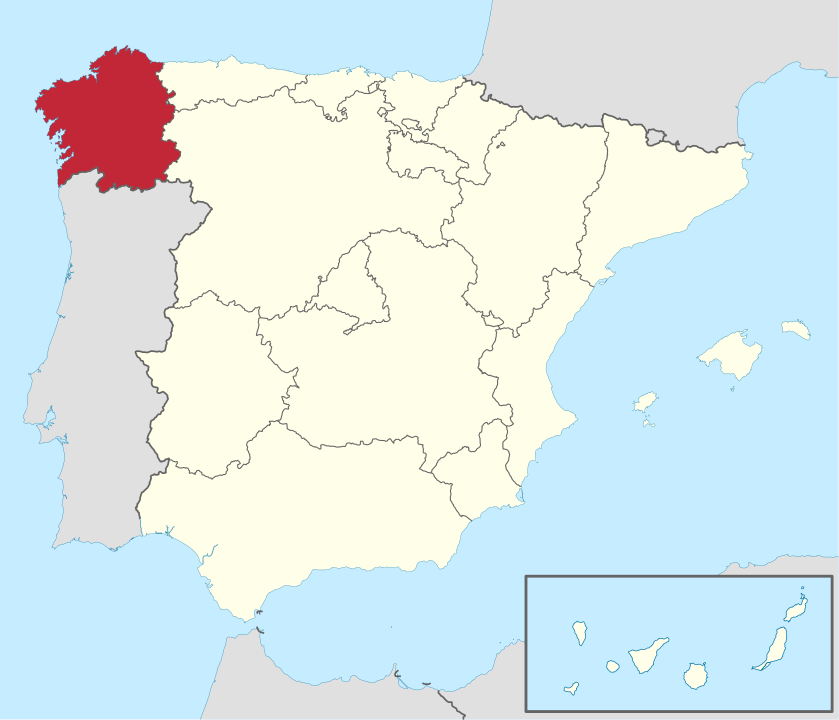The Portuguese Language – 10 Fascinating Curiosities (You’d Never Guess)
European Portuguese learners get to explore a unique language that has spread worldwide. However, learning Portuguese is not only studying the rules and principles that define it as a language. It involves more than understanding how to communicate with other Portuguese-language speakers.
Studying the eighth most spoken language in the world allows you to discover a remarkable side of History and understand how things came to be. It also gives access to other cultures, like those in Brazil and Portuguese-speaking African countries. And there is so much for you to uncover!
For example, have you heard that Portugal has two official languages? Or that Portuguese is the most widely spoken language in South America?
In this article, you will explore ten fascinating curiosities of the Portuguese language. Discover what makes it such an exceptional tongue and how you can use its peculiarities as opportunities for growth.
10 Fun Facts About European Portuguese
Would you like to learn this international communication language? Check out our interactive European Portuguese program, The Journey! It has a fun and conversational approach that gives you the confidence to engage with native speakers naturally.
Learn European Portuguese the Instinctive Way!
For the last decade, we’ve been working on putting together the best possible European Portuguese course. After much research, feedback from our students, and several iterations, we think we’ve got it! 😉
At the base of it all is a sound conviction that languages are better learned instinctively, so the process needs to engaging, varied, and enjoyable. Throughout, we used scientifically proven techniques to help you master pronunciation, phrase construction, oral understanding, grammar, and all the necessary bits to get you to fluency. And still, the whole thing is presented as an adventure. It’s a course like no other, trust us!
Below, discover ten curious facts about the Portuguese language:
Portugal’s Official Language Today Originated From Galician
Portuguese is a Romance language, also known as a Latin language. Like Spanish, Italian, French, and Romanian, it originated from Vulgar Latin, which was spread out by Roman soldiers up to the 5th century.
When the Roman Empire declined, Germanic people occupied the Iberian Peninsula. Their presence had a strong influence on the spoken languages at the time.
The same happened with the Moors, who arrived in the 8th century. They heavily influenced the spoken language, especially in the southern region of Portugal.
With time, medieval Galician developed. It was a dialect spoken in what is now Portuguese and Spanish territory. But instead of being a single language, it evolved as a mix of local dialects and common Latin. During the Middle Ages, Gallego Portuguese emerged as a descendant language.

Portugal became an independent kingdom in the 12th century. Shortly after, in the 13th century, King Dinis I founded the first Portuguese university in Coimbra. He also recognized old Portuguese as the country’s official language.
At this time, the Portuguese language was already detaching itself from other Latin tongues. The consonants “l” and “n” between vowels were suppressed from hundreds of common words. For example, the Latin word “filu” (strong) became “fio” and “moneta” (coin) turned into “moeda.”
Besides, words with double consonants were simplified and retained only a single consonant. The Latin “caballu” (horse), which in Spanish is “caballo,” in Portuguese became “cavalo.” Today, about 2.8 million people speak Galician, particularly in the Spanish territory of Galicia.
The Letter “Ç”
The letter “Ç” (C-cedilla) is a Latin script letter. It is a variation of the letter “C,” indicating a change in pronunciation. Besides several Romance languages, it also appears in Turkish, Albanian, Manx, and other languages.
In the Portuguese language, the letter “C” adopts a k-sound if followed by the vowels “a,” “o,” and “u.” Alternatively, when followed by “e” and “i,” it has an s-sound.
The cedilla indicates the “C” takes on an s-sound despite the vowel following it. Thus, you will only see it before “a,” “o,” and “u.” You find this letter in words like “inspiração” (inspiration), “justiça” (justice), “preço” (price), and “açúcar” (sugar).
The “sh” Sound
The Portuguese language often includes the sound “sh.” This inflection is defined by an “s” at the end of a word, indicating the plural. Otherwise, it also applies when the term includes “ch.”
Regarding the plural, this pronunciation existed first in Brazilian Portuguese. During the Napoleonic invasions, Brazil was still part of the Portuguese colonial empire. Hence, at the time, many aristocrats fled to Rio de Janeiro.
There, among other habits, they acquired this “sh,” common in Brazilian Portuguese for words ending in “s.” For example, “amigos” (friends), “pais” (parents), and “calças” (trousers) are all plurals that finish with a “sh” sound.
Additionally, English also has the joining of the letters “c” and “h.” But its pronunciation is “tsh” instead of the Portuguese “sh.” For example, “peach,” “chocolate,” and “cheese.” You will notice this in common words like “chá” (tea), “cachorro” (puppy), and “chávena” (cup).
The Nasal Vowels
The Portuguese language is full of nasal sounds. Wherever you go in Portuguese-speaking countries, you will notice this characteristic. It is part of both written and spoken language.
Sometimes, it is indicated by a tilde on top of a vowel. But you can also find an “n” within a word or an “m” in its middle, followed by a consonant, or at its end. These are ways to signalize nasal sounds. In exceptional cases like “muito” (much or a lot), you must know to include it in the pronunciation.
This accent in the Portuguese language is one of its most paramount, challenging, and curious aspects. Unlike oral vowels, nasal ones require air to flow simultaneously from your nose and mouth. Languages spoken in other parts of the world outside the Iberian Peninsula also include these sounds.
For example, they are common in Nepali, Cherokee, and French, another Romance language. Learn how to pronounce in Portuguese through our YouTube video: Tricky Sounds of European Portuguese.
The Tilde
The tilde (“til” in European and Brazilian Portuguese) is a symbol that indicates nasal vowels in Portuguese. Not all vowels carry the tilde, but only the “a” and the “o.” It originated from Vulgar Latin and became part of the Portuguese language and several others.
The tilde also has its uses in several programming languages and mathematic formulas. In Portuguese, it found its application to the vowels as a diacritic. You can find it in words like “maçã” (apple), “cão” (dog), and “limões” (lemons).
The Little Words
The Portuguese are passionate about their little words, called “diminutivos.” People often say goodbye by sending “beijinhos” (little kisses). If you meet a friend to have a coffee, they might say: “Vamos beber um cafézinho” (Let’s have a little coffee).
The little words can also change the meaning of a sentence. According to the context and tone, they add a touch of irony, humor, or affection.
You can form these little words by adding the suffix “inho/a” to any noun. Like other Romance languages, Portuguese is a gendered tongue. So remember to adapt the suffix to the gender of the word. “inho” is for masculine names, while “inha” is for feminine ones.
These are not to be confused with other Portuguese words that naturally have these terminations. For example, “cozinha” (kitchen) and “vizinho” (neighbor) are standard names, not “diminutivos.”
The Longest Portuguese Word
Specific morphologic resources enable Portuguese speakers to create astoundingly prolonged words. Joining morphemes that refer to distinct elements allows users to build accurate vocables. Besides, like any other language in the world, Portuguese continues evolving.
The longest Portuguese word is “pneumoultramicroscopicossilicovulcanoconiótico,” with 46 letters. It refers to someone with a rare pulmonary condition caused by inhaling volcanic dust. More standard and shorter is “anticonstitucionalissimamente,” with 29 letters. This last word describes an action as carried out very unconstitutionally.
Of course, you shouldn’t expect to find many of these long words in your daily conversations with Portuguese natives. But it’s a good idea to practice shorter and more common expressions. For example, “cabeleireiro” (hairdresser) and “frigorífico” (fridge) make for great pronunciation exercises.
Idiomatic Expressions
Like the various accents, the Portuguese use many national and regional idiomatic expressions. These expressions are part of standard Portuguese, so you must know them. If taken literally, they can lead to confusion or seem meaningless. But you might find it interesting to learn how their origin intertwines with Portuguese language history.
For example, the translation of “Tirar o cavalinho da chuva” is: “Taking the little horse out of the rain.” This expression in both European and Brazilian Portuguese is equivalent to the English “Don’t hold your breath.” Its origins date back to when people relied on horses for traveling.
In rural areas, a caller would leave the horse outside the door for a quick stop. For longer stays, they would leave the horse in the stable, protected from possible downpours. Yet, it was impolite for a visitor to invite themselves into their host’s stable. Thus, the host would instruct them to move the horse into it by saying: “Pode tirar o cavalo da chuva.” (You can take the horse out of the rain.)
Of course, this warm invitation would also shatter any hopes for the visitor of doing anything else for a while. Today, native speakers use an ironic tone for this expression and the little word “cavalinho”, a “diminutivo” of “cavalo” (horse). It is a common way to break up illusions, unfounded hopes, and high expectations.
The “Tu” vs. “Você” Debate
In Portuguese from Portugal, you can use “Tu” (second-person singular) to interact with people you know. It is informal and used for friends, family, or youths.
Decorous treatments, on the other hand, are a tad more confusing. Some natives in Portugal use “Você” as a formal way to interact with others. But many believe it to be impolite or incorrect. Because there is no common language agreement on this matter, it is often difficult to know how to proceed.
When unsure how to address someone, you can take the pronoun out of the sentence and lead with the verb. Most Portuguese speakers resort to this alternative sentence structure when uncertain. For example, instead of saying: “Você gostou do café?” (Did you like the coffee?), you could use: “Gostou do café?” (Like the coffee?).
In some parts of Portugal, locals use the term “Vossemecê.” Despite being trickier to pronounce, it is also an informal way to converse with others without using “Tu.”
Portugal Harbors a Small Percentage of All Portuguese Speakers
Portuguese is the fastest-growing European language after British English. According to Statista, it has a combined population of 263.6 million speakers. With the way Portuguese has spread worldwide, now only about 5% of Portuguese speakers reside in Portugal.
Still, it is an official language in nine countries. In a way, this is part of the inheritance left by the Portuguese Discoveries. These territories were previously part of the Portuguese colonial administration. After becoming independent countries, they kept the same language.
They are also part of the CPLP or Community of Portuguese Language Countries. This international organization promotes political, cultural, and financial ties among Lusophone countries. Besides Portugal, it includes Brazil, Angola, Cape Verde, Guinea Bissau, Equatorial Guinea, Mozambique, São Tomé and Príncipe, and East Timor.
Despite the contrasts in Portuguese spoken in various countries, its variants are closely related. Thus, it is generally considered a single language.
Concluding on 10 Curiosities of Portuguese From Portugal
The Portuguese language is beautiful and worth exploring. Its idiosyncrasies give a unique character and individuality to its speakers. Throughout this article, you’ve discovered fascinating curiosities about Portuguese language history.
You’ve learned about the strong influence a single language has had in what are now the Lusophone countries. Besides, you’ve also explored singular features that define communication for Portuguese language speakers.
Which of these curiosities did you already know? And which surprised you the most? Getting to know these fascinating facts about the Portuguese language will help you appreciate it more.
Visit our website, Portuguese With Carla, and discover the best way to acquire Portuguese as a second language. Plus, find us on YouTube and Instagram with the latest news and curiosities about European Portuguese!








